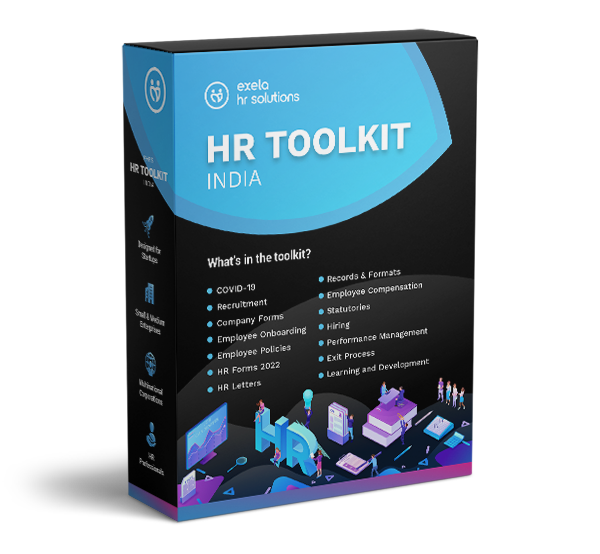
The primary function of any business is to generate revenue and profits. Human capital is crucial for revenue generation, and customer satisfaction depends on the value an organization provides to them. Therefore, employees play a vital role in achieving these goals.
Given the importance of employees, it is essential to ensure that they feel valued, happy, and satisfied. One way to do this is by giving them clear directions on how to grow and develop within the company. First, however, let's take a broader look at this concept.
To succeed in a company, employees need to perform well. This makes it essential for organizations to provide them with the necessary training and coaching. Performance management plays a critical role in the structure of an organization, as it enables companies to give employees precise feedback, communicate performance expectations, and measure performance metrics. A well-designed, organized, and relevant performance management system is at the core of a successful process for channeling employee engagement, focus, and value.
Therefore, organizations must have an effective performance management system in place. With it, companies can provide accurate employee feedback and set clear performance expectations. Here's a brief breakdown of the basics and benefits of a performance management system.
What is a performance management system?
The performance management system, a systematic approach to measuring employee performance, enables organizations to align their goals, mission, and objectives with available resources, strategies, and set priorities. The execution administration framework performs the necessary procedure that characterizes and conveys the activity parts, duties, goals, execution desires, and setting requirements between the administrator and employees. In addition, it includes the shared objectives and targets between the office, association, and representatives that are lined up with assets and frameworks. In a nutshell, it acts as a channel for clarifying goals and enhancing business processes through different mechanisms and methods.
Purpose of Implementing Performance Management System
The primary objective of establishing a systematic performance management system in an organization is to manage employee performance effectively. Here are six primary purposes that a performance management system serves:
-
Strategic Alignment
A performance management system should align with the organization's overall, individual, and departmental goals. This helps ensure that every employee's activities are linked to the organization's strategic objectives.
-
Administrative Support
The performance management system is a deciding factor for administrative tasks such as employee promotion, demotion, transfer, salary increment, and terminations. It helps identify the organization's best performers, underperformers, or non-performers, as well as the competency and skill levels of employees. This information supports management decisions.
-
Communication
The performance management system provides an effective communication channel to inform employees about their job responsibilities, goals, performance standards, and key deliverables. It also indicates areas for improvement and provides a platform for learning and training new skills to improve employee performance and results.
-
Development
The performance management system provides a structured method for communicating positive feedback, development plans, and improvement areas. In addition, managers can use coaching, mentoring, training, and other methods to help team members perform exceptionally.
-
Organizational Maintenance
The performance management system helps measure organizational, employee, and departmental achievements and evaluate performance gaps using different techniques and tools. This helps maintain a healthy environment and performance standards in the organization.
-
Documentation
The organizations must document and maintain the feedback, reviews, forms, and assessment sheets. These documents help businesses clearly understand what worked best and what went wrong, set new targets, design training and learning programs, and determine developmental needs.
Also Read: 10 Critical HR Metrics to Measure in 2023
Building a Successful Performance Management System
Continuous feedback is a significant cornerstone in performance management. Yet many organizations fail to develop a successful performance management system.
Only 2% of organizations feel their performance management approach furnishes excellent value.
That's a lot of room for improvement for the other organizations. Thus, here are a few key elements that will allow you to improve the quality of your performance management systems.
-
Accuracy and Fairness
The system must be accurate and fair. It is difficult for managers to gauge employee performance accurately or comprehensively. Measuring an individual's performance needs multiple perspectives since various job roles require different skills and capabilities. Thus, having a standard process won't always help - you need to employ accurate and fair approaches to gauge employee performance.
-
System efficiency
The system must be efficient. Inefficient processes can take excessive time and end up detracting from performance instead of elevating it. The performance management system should be more than just a flurry of paperwork to help managers make more sound decisions.
-
Performance improvement
The traditional performance management system ensures that employees meet the minimum performance requirements. However, it's time to look at the potential upper limits. An effective system links employee performance to the organization's strategic objectives and current initiatives. In addition, the system should focus on integrating a culture of taking responsibility and making the foreseen change happen.
-
Compensation decisions
Compensation decisions are indirectly linked to performance management. Giving raises, cutting down on bonuses, or providing additional rewards should solely rely on the performance analysis. If your organization isn't providing competitive pay, the performance management system is of no use. In order to make your performance management lead the path of success and advancement, align compensation decisions with it.
-
Multiple sources of data
Having a single data source can drive the results only in one direction. To have an all-inclusive view of your employee performance, extricate data from different sources. You can take the help of multi-rater feedback. Empower managers to get bias-free opinions and collect accurate data, allowing the system to evaluate accurate performance.
-
Coaching and development
The system should incorporate formal coaching and development skills, allowing employees room for improvement. Recently implemented performance management systems with great results have one common element - frequent coaching conversations. However, providing feedback and coaching doesn't come naturally to everyone - managers need to acquire these skills through certain methods such as:
- Having a clear understanding of outcomes pursued from coaching conversations.
- Understanding the required action steps.
- Observing other’s coaching correctly.
- Practicing the coaching and development skills until you gain confidence and competence in using them in real scenarios.
How can a performance management system benefit your organization?
Here's how a performance management system can benefit your organization:
- Improves employee performance by giving them a clear understanding of their KRAs and goals.
- Empowers organizations to overcome their skill gaps by highlighting the essential skills that employees possess and where they are lacking.
- It makes the process employee-centric by giving them the leverage to provide feedback and subsidizing rewards and recognition.
- Enables human resource managers to make bias-free and fair performance decisions by giving them the leverage to analyze different aspects of employee performance.
- Relieves HR professionals from the administrative burden of running performance reviews and takes the burden off executive teams by automating the entire process.
Conclusion
The performance management system needs remodeling to serve the organizations better. It should incorporate new processes that take advantage of feedback to emphasize the future instead of crying over the mistakes in the past. The system must explore the upper boundaries of performance rather than measuring against the minimum. To have exceptional results, remodeling the system must preserve the positive elements of past approaches to achieve performance management goals.
If you are still unsure of how to gauge employee performance correctly, take the help of a good HR outsourcing solution. Exela HR Solutions is a market leader in HR outsourcing that helps with your all-inclusive HR processes to meet desired organizational goals and thrive in the modern business world. Speak with our experts at Exela HR Solutions today!
DISCLAIMER: The information on this site is for general information purposes only and is not intended to serve as legal advice. Laws governing the subject matter may change quickly, and Exela cannot guarantee that all the information on this site is current or correct. Should you have specific legal questions about any of the information on this site, you should consult with a licensed attorney in your area.





